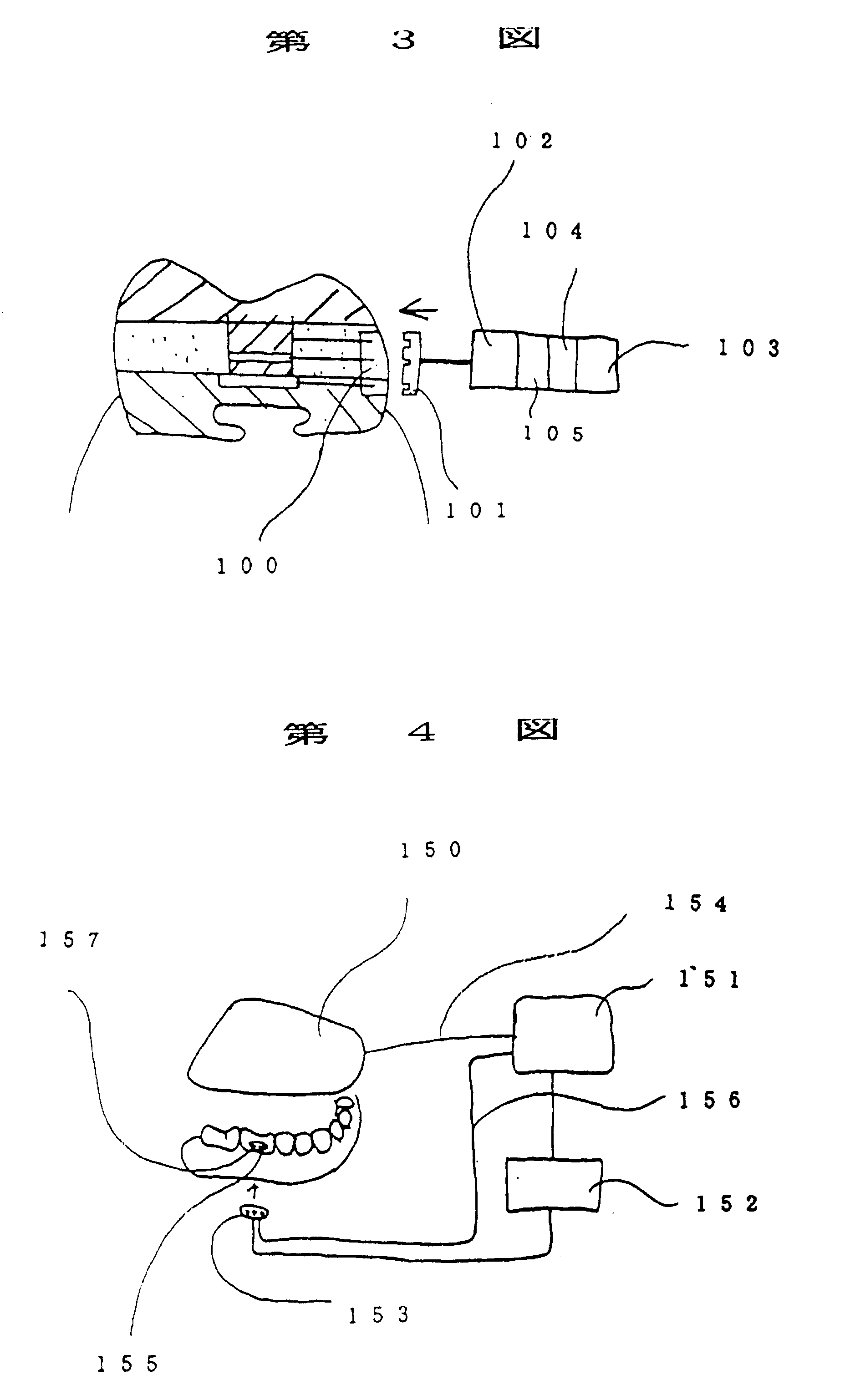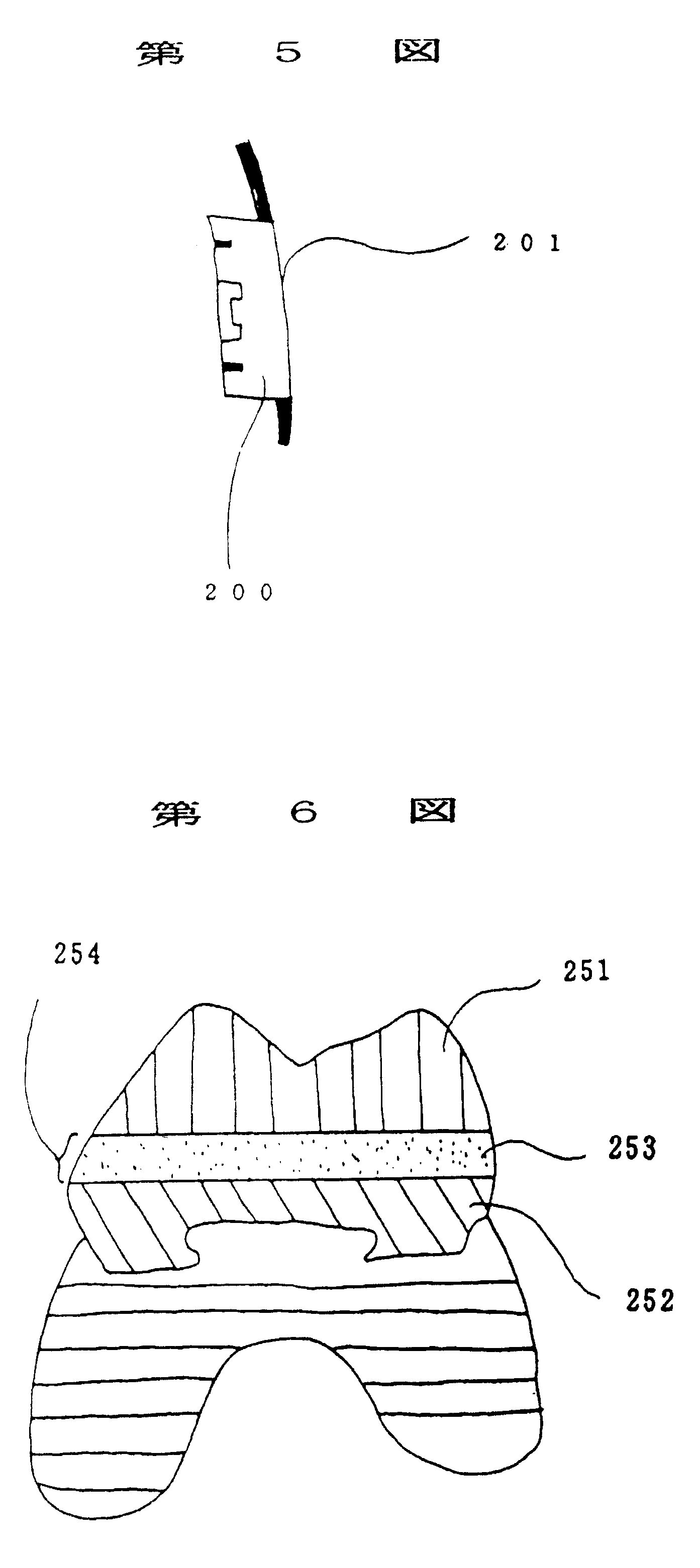Artificial tooth and controller
- Summary
- Abstract
- Description
- Claims
- Application Information
AI Technical Summary
Benefits of technology
Problems solved by technology
Method used
Image
Examples
Embodiment Construction
[0047] Referring now to figures, the preferred embodiments of this invention are exemplified as follows:
[0048] FIG. 1 shows a sectional view of an artificial anterior tooth by which the most basic concept of this invention regarding the artificial anterior teeth will be embodied. Said anterior tooth, having an open port (a dental-corona port) at its dental-corona connector (6), comprises an adjusting mechanism (3) and a connecting rod (7) with which said adjusting mechanism (3) is operated, and both of said adjusting mechanism (3) and said connecting rod (7) are set up between a connecting portion (2) and a dental-corona (1). At least one or more of occlusal-pressure sensing elements (4) are provided, and at least one or more of information-communicating lines (9) connected with said occlusal-pressure sensing element (4) or elements are provided at the open-port at said dental-corona connector (7). A pressure-buffering mechanism (5) is provided, when necessary, and a connecting rod ...
PUM
 Login to View More
Login to View More Abstract
Description
Claims
Application Information
 Login to View More
Login to View More - R&D
- Intellectual Property
- Life Sciences
- Materials
- Tech Scout
- Unparalleled Data Quality
- Higher Quality Content
- 60% Fewer Hallucinations
Browse by: Latest US Patents, China's latest patents, Technical Efficacy Thesaurus, Application Domain, Technology Topic, Popular Technical Reports.
© 2025 PatSnap. All rights reserved.Legal|Privacy policy|Modern Slavery Act Transparency Statement|Sitemap|About US| Contact US: help@patsnap.com



